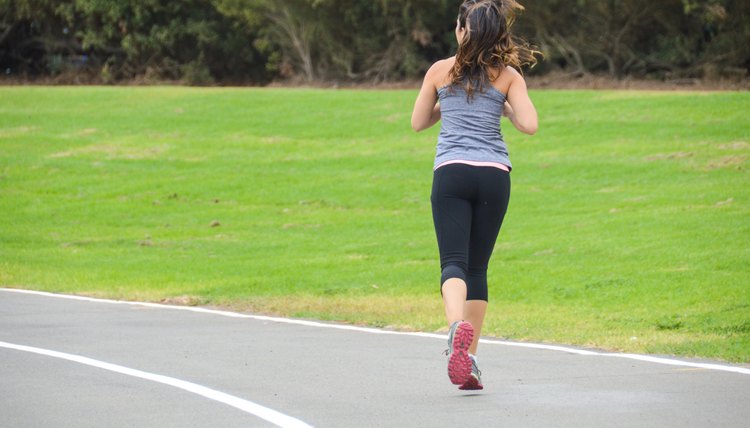Equipment for Running Sprints

Running typically does not require much equipment. A good pair of running shoes can usually get you through a jog in the park while you get in shape. However, if you are a track and field athlete, you may need additional equipment when running sprints. Using this equipment will help you prepare to do your best during a race.
Fancy Footwear
Track spikes are running shoes worn by sprinters during practices and races. They are lightweight, so the sprinter can run faster. The spikes at the bottom are pointed and dig into the ground. This gives the runner traction when rounding corners, allowing each step to be more efficient. The spikes at the bottom of the shoes usually come in three lengths. Chose the spikes that are designed for sprinters.
On Your Marks, Get Set...
Starting blocks are a pieces of equipment used at the beginning of the race for sprints between 100 and 400 meters. Sprinters place one foot on each of the blocks while crouching down before the race begins. The blocks serve as resistance when a sprinter pushes off to take the first step in the race. They allow the sprinter to thrust forward with more power so he can take a bigger first step and get a faster take off. Practicing with your blocks set properly will help you get a faster start to your sprint.
Go!
Sprints are short distance races, so getting a good start is crucial and can make the difference between first and second place. Therefore, it is important to practice your take off when running sprints. Having someone use a starter pistol or horn to signal the start of a race when you practice running sprints will help you get use to the noise so you won't get startled during the actual race. This will also help you practice taking off right as the horn blows so you don't miss a precious second.
Timing is Everything
When running sprints, it is important to know how quickly you can run. This will help you train to beat your time, so you can work to improve your speed and performance in the actual race. Using a stop watch when running sprints will help you time yourself. Mark out a distance of 100, 200, 300 or 400 meters, depending the events you run. Have a friend, coach or trainer initiate the stop watch when you start running, and stop it once you have reached the end mark. Keep track of your times as you continue to practice to see how much your speed has improved.
References
Writer Bio
Based in the Los Angeles area, Brandi Junious specializes in health-related articles. Her writing reflects her expertise in fitness and education. Junious is the author of children's book "A World Without Trees" and her work has appeared on Modern Mom, The Nest Woman, Chron Healthy Living and at Loseweightandlivehealthy.blogspot.com. Junious holds a bachelor's degree in psychology from the University of Southern California and a master's degree in Education.
